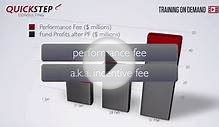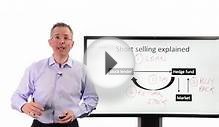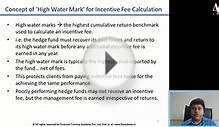
 Although mutual funds and hedge funds may be examined utilizing virtually identical metrics and processes, hedge resources need an extra degree of depth to deal with their standard of complexity and their asymmetric expected returns. This article will deal with a few of the crucial metrics to comprehend whenever analyzing hedge funds, and though there are numerous others that need to be considered, the people one of them article tend to be good starting point for a rigorous evaluation of hedge fund performance.
Although mutual funds and hedge funds may be examined utilizing virtually identical metrics and processes, hedge resources need an extra degree of depth to deal with their standard of complexity and their asymmetric expected returns. This article will deal with a few of the crucial metrics to comprehend whenever analyzing hedge funds, and though there are numerous others that need to be considered, the people one of them article tend to be good starting point for a rigorous evaluation of hedge fund performance.
Efficiency Returns
Just like shared investment overall performance evaluation, hedge resources is evaluated both for absolute and relative return overall performance. But due to the number of hedge fund techniques together with uniqueness of every hedge fund, good understanding of the different kinds of returns is necessary being recognize all of them.
Absolute returns provide the buyer a sense of where to categorize the investment in comparison to the greater amount of old-fashioned types of assets. As an example, a hedge fund with reasonable and stable comes back is probably an improved substitute for fixed-income than it could be for promising marketplace equity, that will be replaced by a high-return global macro investment.
Relative comes back, alternatively, allow an investor to determine a fund's attractiveness in comparison to other investments. The comparables may be other hedge resources, mutual funds and/or certain indexes that an investor is trying to mimic. The key to evaluating relative returns is to determine performance over several time periods, particularly one-, three- and five-year annualized comes back. Also, these comes back must also be viewed in accordance with the chance inherent in each investment, which we'll give consideration to in the next section.
The most effective method to examine general performance is always to determine a summary of peers, which may consist of a cross section of conventional shared funds, equity or fixed-income indexes as well as other hedge funds with comparable strategies. A good investment should perform inside top quartiles for every duration becoming analyzed to be able to effortlessly prove its alpha-generating ability.
Threat
Performing quantitative evaluation without deciding on threat is akin to crossing a hectic street while blindfolded. Fundamental economic principle states that outsized returns can be generated just if you take dangers, therefore although an investment may exhibit exceptional comes back, an investor should incorporate risk in to the analysis to look for the risk-adjusted overall performance of the fund and exactly how it compares to various other assets. Below are several metrics regularly measure risk:
- Standard Deviation - the largest advantages of utilizing standard deviation as a way of measuring threat are its ease of calculation as well as the simplicity associated with the notion of a normal distribution of returns. Unfortunately, this is the additionally the explanation for its weakness in describing the inherent dangers in hedge resources. Many hedge funds do not have symmetrical returns, and standard-deviation metric may also mask the higher-than-expected probability of huge losses.
- Value at an increased risk (VAR) - Price at risk is a risk metric which considering a mix of mean and standard deviation. Unlike standard deviation, however, it will not explain danger when it comes to volatility, but instead whilst the highest quantity that's apt to be lost with a 5% probability. In a normal distribution, its represented because of the leftmost 5percent of likely outcomes.
 The downside is both quantity and probability could be underestimated due to the assumption of normally distributed returns. It must remain examined when performing quantitative evaluation, but an investor must also think about additional metrics whenever evaluating danger.
The downside is both quantity and probability could be underestimated due to the assumption of normally distributed returns. It must remain examined when performing quantitative evaluation, but an investor must also think about additional metrics whenever evaluating danger. - Skewness - Skewness is a way of measuring the asymmetry of returns, and analyzing this metric can lose additional light regarding risk of an investment. Figure 1 reveals two graphs with identical means and standard deviations. The graph on the left is favorably skewed. This implies the mean > median > mode. Notice the way the correct end is much longer therefore the results from the remaining are bunched up toward the center. Although these outcomes suggest a higher possibility of an end result that's significantly less than the suggest, in addition shows the likelihood, albeit reduced, of an extremely good result, indicated by the long tail regarding the right-side.
| Figure 1: good skewness and unfavorable skewness |
| Supply: "Contingency Analysis" (2002) |
A skewness of around zero suggests an ordinary distribution. Any skewness measure that is good would more likely resemble the circulation on left, while bad skewness resembles the distribution from the right. As you can plainly see from the graphs, the risk of a negatively skewed distribution may be the likelihood of a very negative result, regardless of if the probability is reasonable.
YOU MIGHT ALSO LIKE












